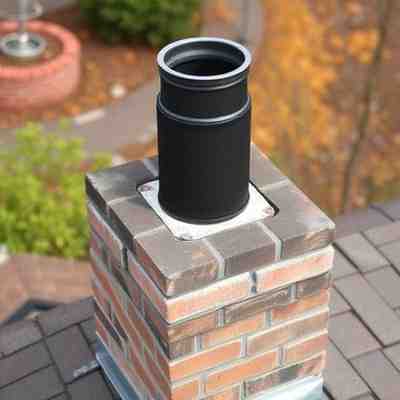Hair Transplant in Dubai has become one of the most popular solutions for men and women struggling with baldness or thinning hair. With world-class clinics and highly skilled surgeons, Dubai offers some of the best outcomes in hair restoration worldwide. However, before undergoing surgery, there are important things every patient should know. From preparation and expectations to potential risks and aftercare, being informed ensures a smoother journey and more satisfying results.
Understanding the Basics of Hair Transplants
A hair transplant is a surgical procedure that involves moving healthy hair follicles from a donor area (usually the back or sides of the scalp) to bald or thinning areas. The two most common methods are:
-
FUE (Follicular Unit Extraction) – follicles are extracted individually, leaving minimal scarring and offering faster recovery.
-
FUT (Follicular Unit Transplantation) – a strip of scalp is removed, and follicles are dissected for transplantation, often used when larger coverage is needed.
Both methods are widely available in Dubai and are performed with advanced tools and techniques.
Why Choose Dubai for Hair Transplants?
Dubai has become a medical tourism hotspot, particularly for cosmetic procedures. Patients choose Dubai for:
-
Highly experienced surgeons with international training.
-
Cutting-edge technology, including robotic FUE and PRP therapy.
-
Luxury clinics that provide world-class comfort and confidentiality.
-
Strict medical regulations, ensuring patient safety and ethical practices.
This makes Dubai an ideal destination for those seeking safe, natural, and long-lasting results.
Who is a Good Candidate for Hair Transplant Surgery?
Not everyone is an ideal candidate for surgery. Factors that determine eligibility include:
-
Age – Most surgeons recommend waiting until hair loss has stabilized, usually after 25.
-
Donor hair density – Sufficient healthy hair follicles are needed for transplantation.
-
Type of hair loss – Pattern baldness responds well, but diffuse thinning may require other treatments.
-
Health condition – Patients with uncontrolled diabetes, scalp infections, or bleeding disorders may not be suitable.
Consulting a qualified surgeon in Dubai helps assess candidacy and develop a personalized plan.
Preparing for the Surgery
Preparation plays a vital role in achieving successful results. Patients are usually advised to:
-
Stop smoking at least two weeks before surgery, as it impairs healing.
-
Avoid alcohol and caffeine a few days before the procedure.
-
Discontinue blood thinners or certain medications (with doctor approval).
-
Wash hair properly the day before surgery but avoid styling products.
-
Arrange time off work since initial recovery may require a few days of rest.
These small steps can significantly improve healing and reduce complications.
The Procedure Step by Step
-
Consultation – The surgeon examines the scalp, discusses goals, and designs a suitable hairline.
-
Preparation – The donor area is trimmed and cleaned. Local anesthesia is applied.
-
Extraction – Hair follicles are harvested using FUE or FUT.
-
Graft Preparation – Follicles are carefully separated and preserved.
-
Implantation – The surgeon makes tiny incisions and places grafts into the bald areas.
-
Post-op Care – The scalp is bandaged, and aftercare instructions are provided.
Depending on the number of grafts, the surgery can take 4–8 hours.
Recovery and Healing Process
Recovery is relatively quick, especially with FUE. Most patients experience:
-
Mild swelling and redness for a few days.
-
Scabbing around grafts that fall off in about 10–14 days.
-
Shock loss where transplanted hair temporarily falls before regrowth.
Within 3–4 months, new hair starts to appear, with full results visible in 9–12 months. Patients can usually return to work within a week, depending on their comfort level.
Risks and Side Effects You Should Know
Like any surgery, hair transplants carry risks, although they are rare when performed by skilled professionals in Dubai. Potential side effects include:
-
Minor infections if aftercare is ignored.
-
Scarring (more common with FUT).
-
Uneven hair growth if grafts are not implanted correctly.
-
Temporary numbness or tingling in the scalp.
Choosing a certified and experienced clinic significantly minimizes these risks.
Cost Considerations in Dubai
While costs vary depending on the clinic and number of grafts required, Dubai offers transparent pricing structures. Patients are encouraged to prioritize quality over cost to avoid poor outcomes and the need for corrective procedures.
Questions to Ask Your Surgeon
Before committing to surgery, ask your surgeon:
-
How many hair transplants have you performed?
-
Which technique (FUE or FUT) is right for me?
-
What results can I realistically expect?
-
Do you offer PRP therapy with the procedure?
-
What aftercare services are included?
These questions ensure you make an informed decision.
Life After a Hair Transplant
Patients who undergo surgery often report improved self-image, better social interactions, and even enhanced professional opportunities. Maintaining results requires proper hair care, a healthy lifestyle, and regular check-ups with the surgeon.
Final Thoughts
If you’re considering a Hair Transplant in Dubai, preparation and knowledge are key to success. Understanding the process, risks, and recovery ensures realistic expectations and smoother results. With world-class clinics, cutting-edge technology, and highly skilled surgeons, Dubai offers one of the best destinations for hair restoration. By doing your research, preparing well, and choosing the right clinic, you’ll be on the path to regaining not only your hair but also your confidence.


